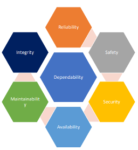It has been an article of faith that you can’t use formal tools to validate datapath logic (math components). Formal is for control logic, not datapath, we now realize. We understood the reason – wide inputs (32-bit, 64-bit or more) fed through a multiplier deliver eye-watering state space sizes. State space explosions also happen… Read More
Very Short Reach (VSR) Connectivity for Optical Modules
Bandwidth, latency, power and reach are always the key points of focus when it comes to connectivity. As the demand for more data and higher bandwidth connectivity continue, power management is gaining a lot of attention. There is renewed interest in pursuing silicon photonics to address many of these challenges. There are many… Read More
Bigger, Faster and Better AI: Synopsys NPUs
AI-based applications are fast advancing with evolving neural network (NN) models, pushing aggressive performance envelopes. Just a few years ago, performance requirements of NN driven applications were at 1 TOPS and less. Current and future applications in the areas of augmented reality (AR), surveillance, high-end smartphones,… Read More
The Path Towards Automation of Analog Design
You may have noticed that I have been writing a lot more about analog design lately. This is no accident. Analog and custom blocks are increasingly important because of the critical role they play in enabling many classes of systems, such as automotive, networking, wireless, mobile, cloud, etc. Many of the SoCs needed for these… Read More
Design to Layout Collaboration Mixed Signal
When talking about today’s sophisticated advanced node designs it’s easy to first think about the digital challenges. Yet, the effort to design the needed analog and mixed signal blocks for them should not be underestimated. The need for high speed clocks, high frequency RF circuits and high bit rate IOs makes the analog portions,… Read More
Synopsys Tutorial on Dependable System Design
Synopsys hosted a tutorial on the last day of DVCon USA 2022 on design/system dependability. Which here they interpret as security, functional safety, and reliability analysis. The tutorial included talks from DARPA, AMD, Arm Research and Synopsys. DARPA and AMD talked about general directions and needs, Arm talked about their… Read More
Synopsys Announces FlexEDA for the Cloud!
There’s been a lot of discussion and hype regarding use of the cloud for chip design for quite a while, more than ten years I would say. I spoke with Synopsys to better understand their recent Synopsys Cloud announcement to determine if it is different. Briefly, it is different, and here is why:
If you’re trying to design a complex SoC,… Read More
Use Existing High Speed Interfaces for Silicon Test
The growth of complexity for silicon test as it relates to test data volume and test times is driven by multiple concurrent factors. One dimension is simply the increase in silicon complexity. However, other factors are playing a role as well. These include higher reliability requirements for new applications such as automotive,… Read More
Getting to Faster Closure through AI/ML, DVCon Keynote
Manish Pandey, VP R&D and Fellow at Synopsys, gave the keynote this year. His thesis is that given the relentless growth of system complexity, now amplified by multi-chiplet systems, we must move the verification efficiency needle significantly. In this world we need more than incremental advances in performance. We need… Read More
Upcoming Webinar: 3DIC Design from Concept to Silicon
Multi-die design is not a new concept. It has been around for a long time and has evolved from 2D level integration on to 2.5D and then to full 3D level implementations. Multiple driving forces have led to this progression. Whether the forces are driven by market needs, product needs, manufacturing technology availability or EDA… Read More










